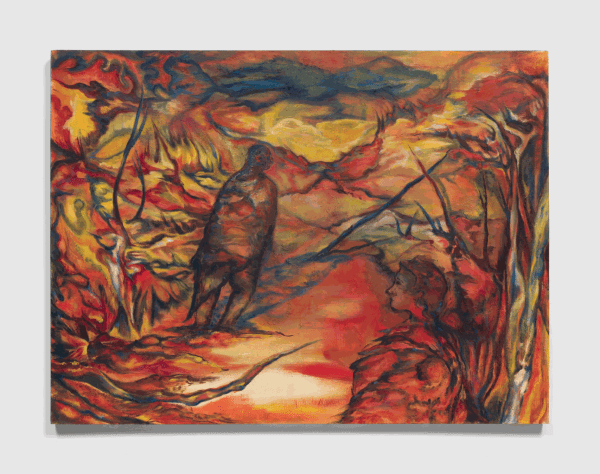10 Contemporary Artists Painting Dreamlike, Fantastical Landscapes
Samuel Anderson
Jun 29, 2023 5:27PM
Representing a three-dimensional landscape on a two-dimensional surface like canvas is always a give-and-take between the real and imaginary. But landscape painters who step into fantastical terrain have all the more choices to make when it comes to achieving that balance. A more experimental approach to their subject matter allows painters to showcase their formal abilities, as well as an unexpected, surprising worldview.
By stretching reality’s colors and forms, these artists allow us to navigate imagined spaces that both beckon and resist human contact, while also suggesting a radical reengagement with our own environment. Such work acquires special resonance today, as the landscape itself becomes increasingly mercurial—whether by smoke pollution from wildfires unleashing alien, orange skies in the U.S., or carbon emissions driving a feedback loop of extreme weather worldwide. In the case of these contemporary painters, however, the drastic changes to the environment are confined to the canvas.
Erica Mao
B. 1994, Baltimore. Lives and works in Queens, New York.
Given the subject matter of Erica Mao’s paintings—enigmatic scenes of a pre- or post-civilized world—it’s fitting that her practice would also include an ancient art like ceramics. In both mediums, Mao harks back (or projects forward) to a power struggle between humans and their environment that is always unfolding. In her bright paintings, humanoid figures—which Mao calls her protagonists—often appear like outcasts, en route, crossing over untamed land and sea toward an unknown destination.
Though she takes liberties with their surroundings, depicting the terrain rising up and lashing out, she also intends the viewer to find traces of themselves within her works. “Sometimes it feels like I am creating a set for a play or movie, framing the right shot to follow the narrative storyline between the characters,” she said. Despite that vivid worldbuilding, there isn’t necessarily a moral at the end of the story. “My practice is like wandering in a cave with a flashlight,” she said. “As I point the beam of light to different spots I gain another piece to the puzzle.”

